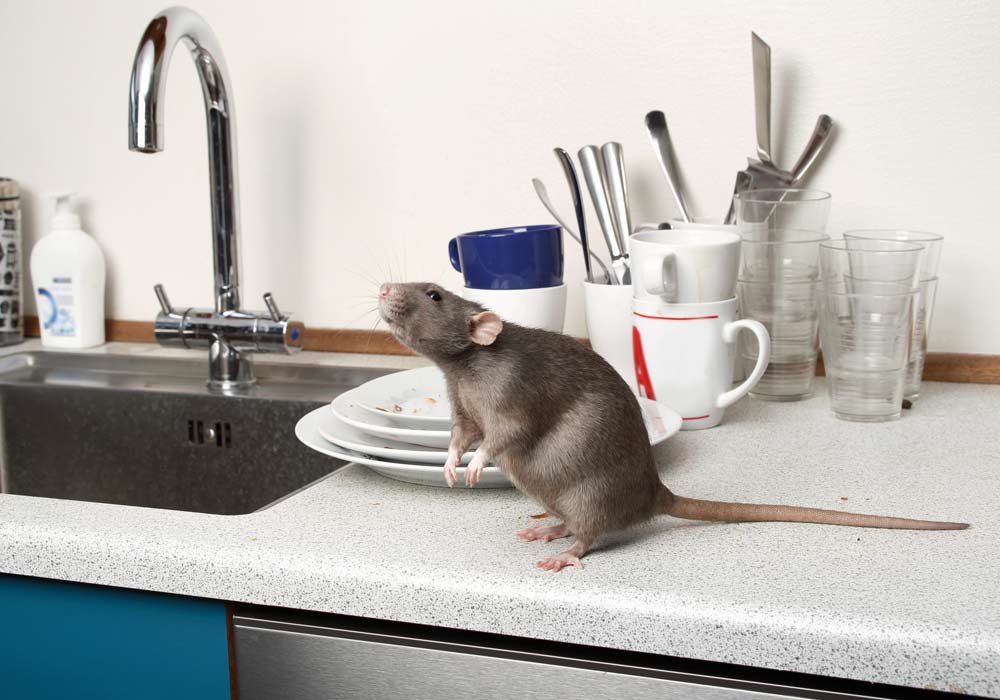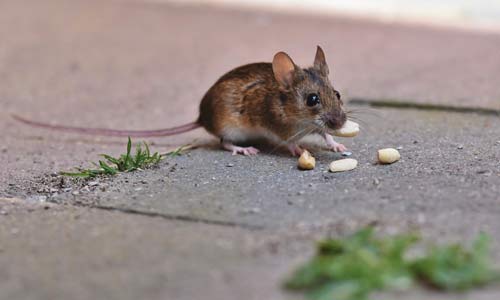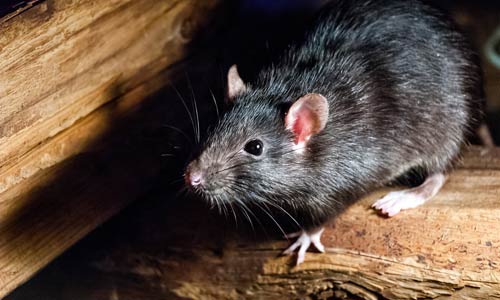Rodents
Mice and rats may cause chaos on homes and businesses, leading to significant financial losses and health risks. They consume a wide variety of foods and items due to their omnivorous nature. With incisors that never stop developing, they feel an overwhelming want to chew on anything and everything they encounter. They spread bacteria and pathogens in the environment through their large amounts of urine and faeces, thus avoiding them is important. The insulation, wiring, floor joints, and walls of your home are all fair game for rodents to nibble through. By burrowing, they might weaken your foundation and retaining walls. The House Mouse, Roof Rat, and Norway Rat are the most common types of invasive rodents in New Zealand. Without proper rodent pest control services, they can soon become a big issue for homes and businesses due to their rapid reproduction rate.
Want to get rid of mice and rats without using toxic substance? Find out more about the SMART Digital Pest Control we offer for commercial and residential properties.

Commercial Pest Solutions
Integrated Pest Management Solutions
In order to ensure a pest-free environment for commercial workplaces and buildings, our Integrated Pest Management program includes the most recent technology with an emphasis on prevention and tackling the core causes of pest problems. Our solutions are specifically designed to proactively avoid insect infestations and to minimize their effects and risks. To provide you with the best in pest management, we combine customised multifaceted solutions with our most cutting-edge digital pest technology and our highly trained, skilled team of professionals. So, let us develop a personalised plan for your business.
SMART Digital Pest Control
Our SMART Pest Control is a user-friendly digital pest control system that monitors your business by automatically detecting rodents, cockroaches, and moths. SMART technology will continuously monitor rodent activities. When activity is detected, the technology reacts immediately, records it, and generates a report while capturing rats safely and sustainably. For comprehensive, integrated protection against all significant pests, combine SMART automation with our standard pest control services.
Common Rodent Questions
Where do rats & mice live?
Rats and mice can be found populating a wide range of habitats, but cities are ideal for their growth and development. They burrow in gardens and make their homes in the soil or in the hollows of walls. Business properties are easy pickings for criminals, especially in areas with plenty of trash and open fields. Because both the inside and exterior of the building play a role, they can have an impact even on a spotless establishment.
When are rats & mice active?
Since rodents are nocturnal, their peak activity occurs between the hours of dark and dawn. They’re easily startled by bright lights. If you see them during the day, they may be vying for food with a big population. A mouse can squeeze through an opening the size of a pencil, or it can nibble its way through even the toughest materials. They are very active animals. A mouse has a 13-inch vertical jump and can also run along almost any type of wire, cable, or rope. They are fantastic in jumping, swimming, and climbing, and can easily navigate rocky and vertical terrain.
Why are rats & mice considered pests?
Mice and rats are both resilient and strong species. After they’ve invaded your home, they can be nearly impossible to exterminate. Eliminating rodents is important because they can contaminate food and cause structural damage if left unchecked. An outdoor rat poses a threat to children and pets because of the diseases it can spread. They can cause fire dangers, damage insulation, and gnaw through wires within a building. It’s possible for them to infect food with harmful bacteria like salmonella, which can then spread illness. Leptospirosis, typhus, and trichinosis are only some of the illnesses that can be contracted.
What are the key signs of rodent activity?
Keep an eye out for mouse or rat poop. When they’re brand new, these are pliable and glossy. The shine and softness disappear after only two or three days of drying. Rat droppings can be up to 12mm in length and are blunt, whereas mouse droppings are only 3–6mm in length and have a sharp tip. When there is a significant rodent population, the grease they secrete might also be noticeable on nearby surfaces. Bite marks on wood, cables, and metal may also be an indication, as well as the presence of rat tunnels and nighttime squeaking and gnawing. Gnawing allows them to file and sharpen their ever developing incisors.
How do I dispose of a dead rat or mouse?
You may have to throw away a dead rat or mouse throughout the extermination process. Rodents transmit diseases and poisons and should not be let around your pets. Glove up for the trap-emptying process, and then roll up those newspapers for the trash. Don’t bury them because a curious dog, cat, or wild animal might unearth them at some point. There’s nothing to be done but wait if you think a dead rodent is wedged in an inaccessible wall hollow. The odour will dissipate after it has dried up and begun decomposing, which should take around two weeks. If the smell becomes intolerable, there are products available to help.
Common Rodent Species

House Mouse
Apppearance
Grey or brown fine fur, sharp snout, and slim build. 20g in weight, mostly naked, with a tail as long as its body. ears with thick hair.
Lifestyle
Mice, who are smaller than rats, have more alternatives for nesting. They often establish their nests in buildings in furniture, cabinets, roof voids, and wall voids where food is kept. They reside underground in burrows. They are serious pests because their frequent nibbling, droppings, and urine contaminate food. can spread a wide range of diseases and expand swiftly to plague proportions. Sanitation, rodent-proofing, trapping, and chemical treatment are some pest control techniques.
Habits
The house mouse, despite having a deceptively innocent appearance, is the mouse species in charge of significant mouse infestations in New Zealand. A house mouse will typically be found nesting in furniture, wall cavities, roof spaces, and occasionally outside as they like dry regions. The house mouse is an omnivore, but they favour eating grains of cereal. They only reach a maximum weight of around 20 grammes and have an extremely tiny, narrow body that enables them to fit through small pipelines and openings. desire to live inside and avoid living in sewers.

Roof Rat
Apppearance
Roughly 260 grammes. Large, nearly hairless ears on a lean torso. Whether grey, black, or brown, the belly can be white. Black Rat is another name for the roof rat.
Lifestyle
They can wander freely throughout the building in search of food, but they are most frequently found in wall and roof spaces. They frequently infest seaports and ships. Despite being omnivores, they like nuts, grains, fruits, and cereals. Usually, they hunt for food up to 50 metres from their nests. They are a serious problem because their droppings and urine can contaminate food and spread disease. Short circuits, malfunctions, and fires can result from the physical nibbling of wires.
Habits
The roof rat, often known as the “black rat,” is the smallest of the three species of rats and is frequently discovered in rooftops. They are an agile species that is also quite timid because they can climb well. They are weak swimmers, don’t burrow, and rarely enter sewers, in contrast to other rodent species. These rats’ extremely thin bodies also make it simple for them to squeeze through gaps and crevices in structures.

Norway Rat
Apppearance
Roughly 450g in weight. hefty build and a pointy snout. short tail, small ears, and reddish-brown fur.
Lifestyle
The Norway rat can be found in homes, supermarkets, farms, factories, warehouses, and more. They build their nests in cavities found in walls, roofs, or other locations that provide hidden shelter. They favour ground-level burrows, drains, and sewers the most generally. They frequently gain access to buildings through cracks and openings in shoddyly built structures, growing to be a serious problem by nibbling through wires, contaminating food, and dispersing disease through their urine and excrement.
Habits
The largest of the pest species, Norway rats take over in regions where other species coexist. They can also go by the names “brown rat,” “water rat,” or “sewer rat,” and they are a hybrid of several rodent species. They nest in sewers, in streams, and in burrows, and they can become violent when challenged. They can live both indoors and outdoors. They can stay under water for up to three days and are good swimmers.
I found Rodents! Help!
Don't worry, we're here to help. Follow these steps to stay safe until help arrives!
Call a Professional
Call Flick Pest Control Immediately.
If you encounter rodents in your home or business, you may be dealing with an infestation. Don’t wait until the problem gets out of hand – we can help protect your property and ensure the health and safety of those around you. Fill out the form below or call 0800 710 010 today.
Leave the Rodents Alone
Trust Flick Pest Control to handle the situation
Our pest control technicians have the knowledge, experience, and tools necessary to effectively and safely eliminate pests from your home or business. Attempting to treat rodents on your own can be risky and may not fully eradicate the problem.
We will and ensure a safe and effective outcome for your property.
There May be More!
Don’t Go Looking Around!
Flick’s pest control experts will perform a thorough inspection of the property to identify any areas where rodents may be present, followed by the development of a treatment plan tailored to the specific needs of the situation. By implementing effective pest control strategies, we can help ensure a pest-free environment for you.
